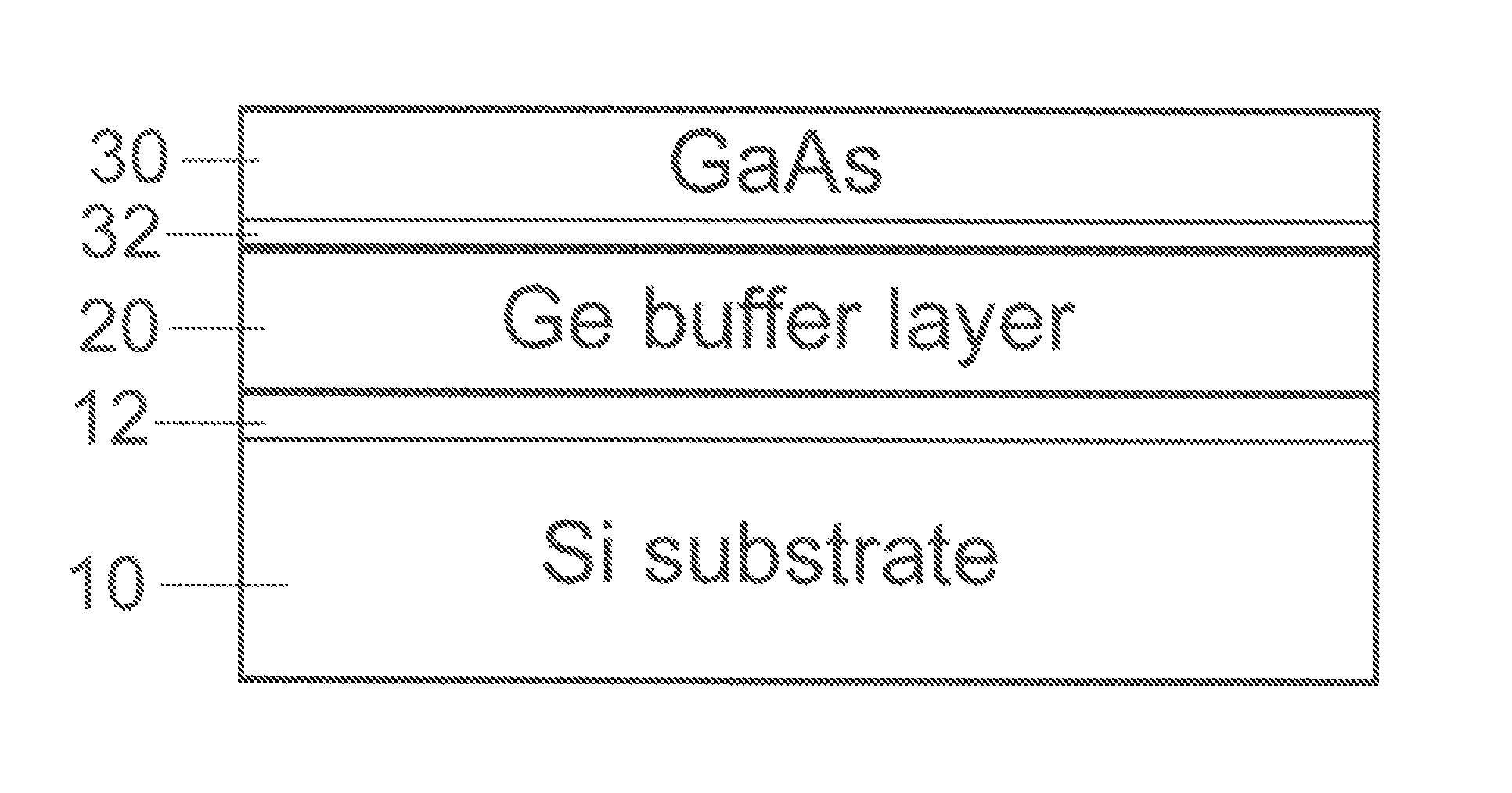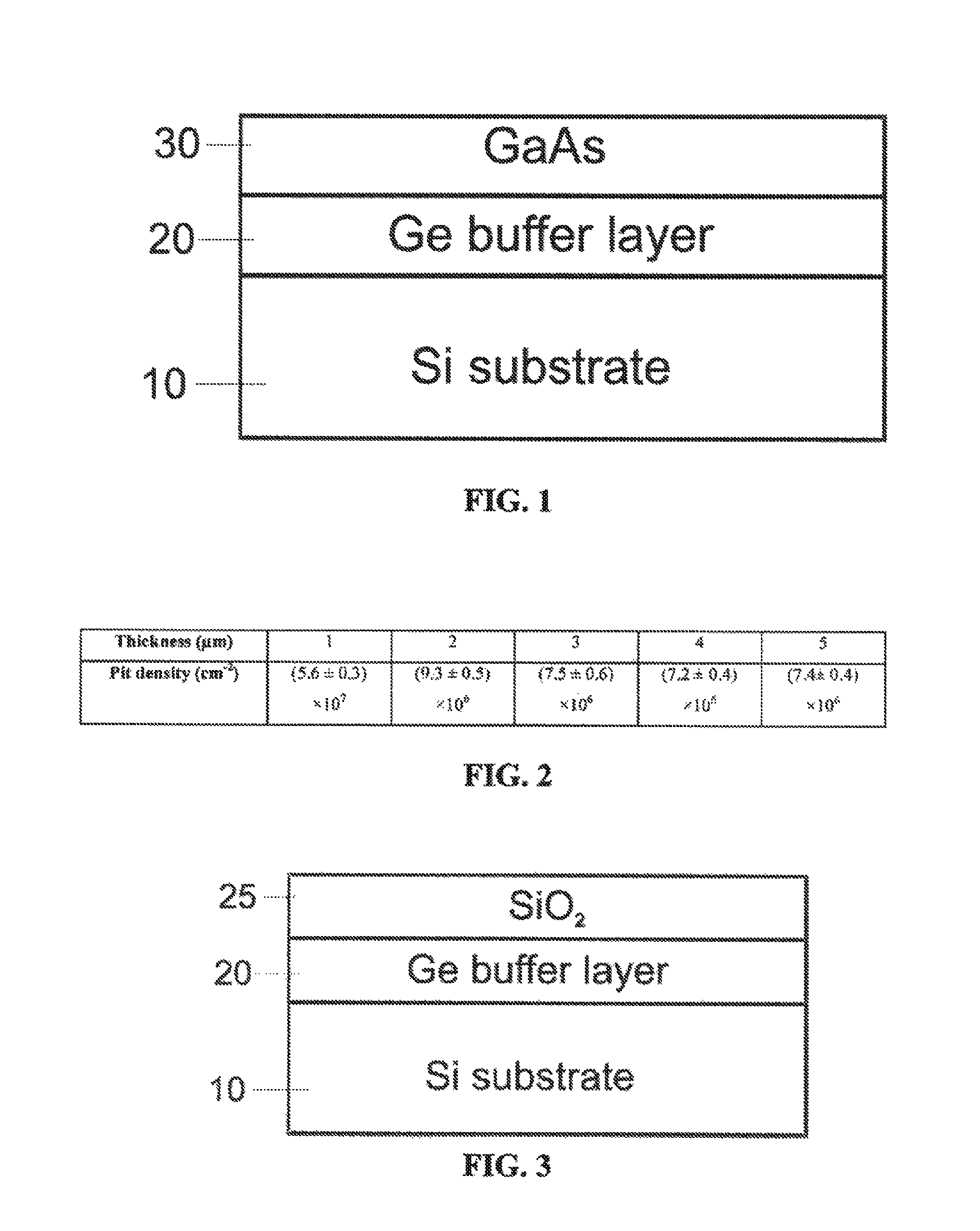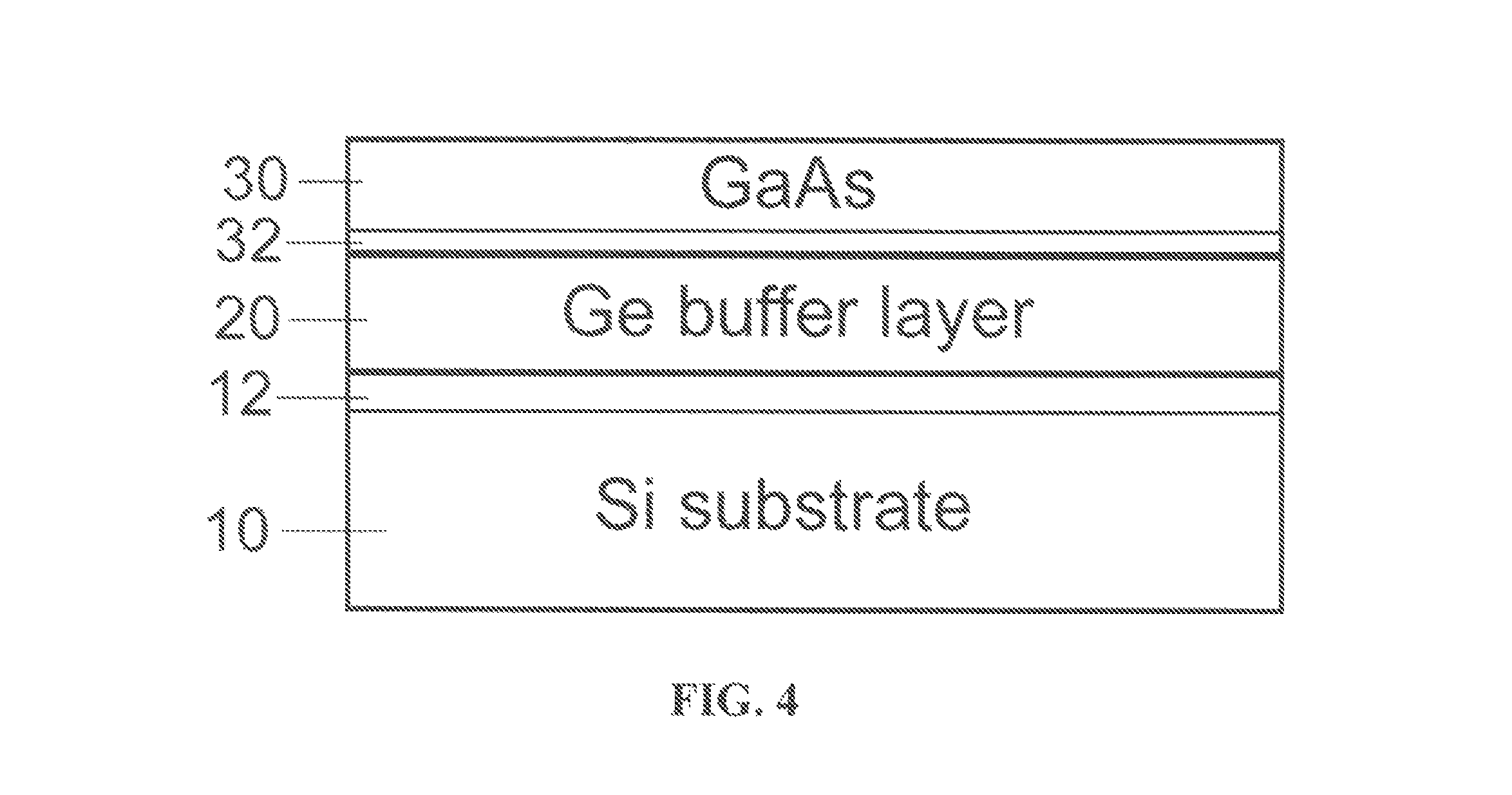Method for producing virtual Ge substrates for III/V-integration on Si(001)
a technology of virtual ge substrates and vintegration, which is applied in the direction of chemical vapor deposition coatings, crystal growth processes, coatings, etc., can solve the problems of depletion of source resources, degraded properties, and time-consuming epitaxial growth, and achieve fast epitaxial growth of iii/v semiconductors
- Summary
- Abstract
- Description
- Claims
- Application Information
AI Technical Summary
Benefits of technology
Problems solved by technology
Method used
Image
Examples
Embodiment Construction
)
[0044]A first embodiment of the invention is shown in FIG. 1. The surface of a Si wafer 10 is cleaned by a wet chemical treatment or a hydrogen plasma treatment. After loading into the LEPECVD reactor the layout of which has been described for example in U.S. Pat. No. 6,454,855 to von Känel et al., the temperature of the wafer is increased to approximately 600° C. Next, a Ge buffer layer 20 is epitaxially grown by low-energy plasma-enhanced chemical vapor deposition (LEPECVD), preferably at a rate of at least 5 nm / s. The thickness of the Ge layer is preferably chosen to be in the range of 0.75 to 5 μm. It has been shown by high-resolution X-ray diffraction that Ge layers grown in this way are relaxed to 100%. Surface roughness measured by AFM amounts to typically 1 nm rms.
[0045]The temperature is then raised to above 700° C., preferably to about 900° C., for about 10 minutes. In another embodiment of the invention the temperature is repeatedly cycled between about 700° C. and 900° ...
PUM
| Property | Measurement | Unit |
|---|---|---|
| temperature | aaaaa | aaaaa |
| thick | aaaaa | aaaaa |
| surface roughness | aaaaa | aaaaa |
Abstract
Description
Claims
Application Information
 Login to View More
Login to View More - R&D
- Intellectual Property
- Life Sciences
- Materials
- Tech Scout
- Unparalleled Data Quality
- Higher Quality Content
- 60% Fewer Hallucinations
Browse by: Latest US Patents, China's latest patents, Technical Efficacy Thesaurus, Application Domain, Technology Topic, Popular Technical Reports.
© 2025 PatSnap. All rights reserved.Legal|Privacy policy|Modern Slavery Act Transparency Statement|Sitemap|About US| Contact US: help@patsnap.com



